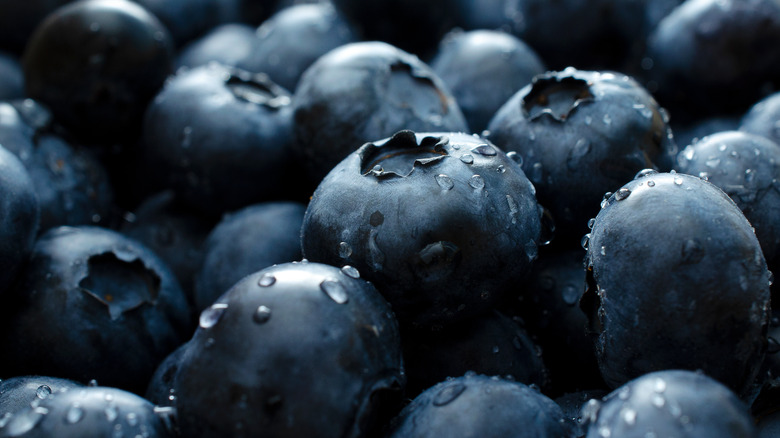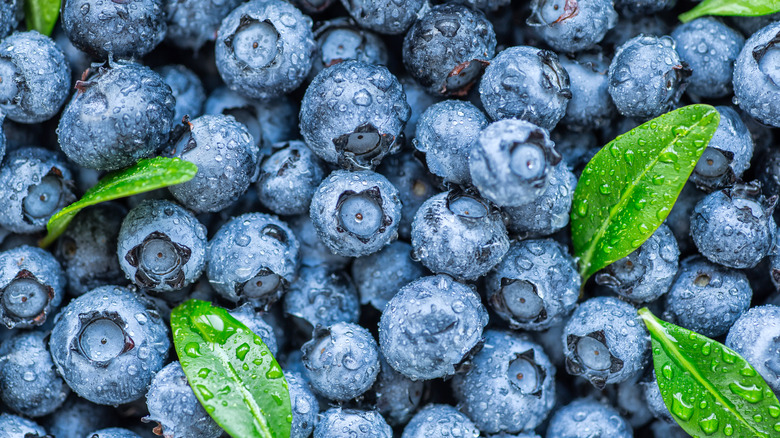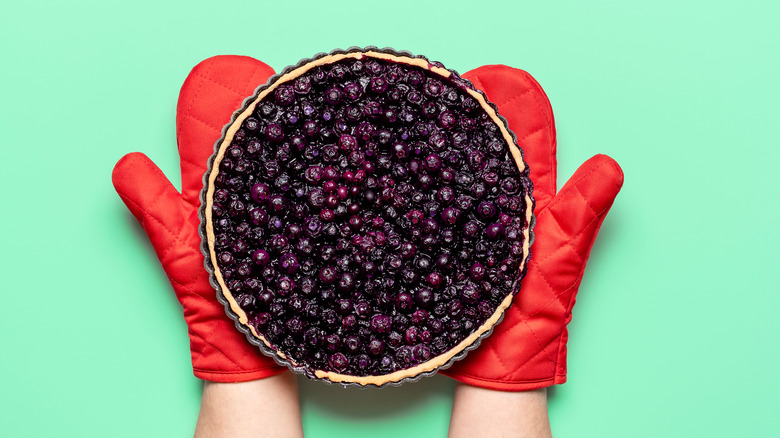The One Herb That Always Amplifies Blueberry Flavors
There are flavor pairings that meld together perfectly like a match made in heaven — chocolate and mint, peanut butter and banana, tomato and basil ... and blueberry and coriander. Yes, you read that right. While those delightful winter berries and warm, flavorful seeds may seem like polar opposites on the flavor spectrum, they are actually terpene twins. And when you pair these two kindred spirits together, undeniable compatibility will inspire a chef's kiss.
Some may associate coriander with cilantro, and that is for good reason — the two are derived from the same plant species called Coriandrum. While names for the herb vary across cultures and countries, in the U.S., cilantro typically refers to the green leafy stalks we love mixed in with guacamole and topped on tacos. In contrast, coriander refers to the seeds from the plant we often find in stews and curries. However, cilantro and coriander have significantly different flavor profiles, so while they share a kinship, they are not interchangeable in recipes.
What are terpenes?
Now that we have sorted out coriander vs. cilantro let's bring out the blueberries. While their flavor is mild (especially in comparison to other berries like sweet strawberries or tart raspberries), there is a distinct taste that, may we say, is rather soothing. But what is the source of that flavor? The answer is terpenes.
Terpenes are highly complex, and the scientific community has only just touched upon an understanding of their magic. Terpenes are the chemical compounds found in plants (and some animals) that give aroma profiles. Terpenes have many valuable purposes, such as deterring harmful pests and attracting helpful pollinators; luckily, they add tremendous flavor. In essence, terpenes give plant scents that certain je ne sais quoi that keeps us coming back for more.
There are many types of terpenes, with pinene, myrcene, limonene, and linalool being some of the well-known ones. Linalool is found in lavender and is credited for the calming properties of the plant.
But what does all this have to do with blueberries and coriander? You guessed it, blueberries and coriander both contain linalool. So, when the two plants are combined, that flavor becomes layered and enhanced and oh-so-delicious. Fun fact: food manufacturers use linalool when creating synthetic blueberry flavorings.
What to make with blueberries and coriander
While pairing blueberries with coriander may be a new concept for many at-home chefs, it is widely accepted as a delicious kitchen tip. If you're unsure how to mix these, you should know that blueberries and coriander express certain yet indescribable flavors, making them popular for feel-good breakfast recipes like pancakes, scones, and muffins. And, of course, we cannot go without suggesting a blueberry and coriander pie or cobbler for dessert!
If you are an at-home canner who loves making (and gifting) jam jars, how about creating a signature blueberry coriander recipe? And while you're at it, make a simple blueberry coriander syrup you can drizzle over weekend waffles and frozen desserts. And if you are in a time crunch or are unsure if the flavor combo is for you, sprinkle some ground coriander seed over your next bowl of blueberry oatmeal. The combo works well in blueberry mocktails and beverages, too. However you decide to prepare blueberries and coriander, you will be glad you did.


